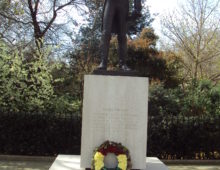Tagged with Industrial Revolution
Resource : A peep at the gas lights in Pall Mall
Before the 1800s, most homes, workplaces and streets were lit by candles, oil lamps or rushlights (rush plants dried and dipped in grease or fat). But these gave off a very dim light and could be smoky. In 1792, the Scottish engineer and inventor William Murdoch (1754-1839) made an extraordinary discovery which would transform not only lighting, but heating, cooking and all sorts of other activity and industry. Experimenting in his back garden in Cornwall, he found a way to produce gas, by heating coal in a closed container and collecting and cleaning the smoke. He piped the gas into his house, made holes in the pipes and lit the gas there. This produced a light much brighter and safer than from candles or oil lamps.
Resource : Chamber pot with Napoleon’s head
In the early 1700s, most potteries were small, family-run businesses with pieces being handmade using traditional methods. The industrial revolution transformed the production of pottery (and other goods) in Britain, meaning it could now be mass produced – on a scale previously unimagined. Pottery designers and manufacturers like Wedgewood and Spode were among the most successful pottery industrialists of the time, becoming household names.
Resource : The Iron Bridge
This large bridge, at Ironbridge in Shropshire, was the first arch bridge made of iron anywhere in the world. It was built to replace an unreliable ferry service across the River Severn. Opened on New Year’s Day, 1781, it was so successful that it gave its name to the local area.
Resource : Newcomen Beam Engine
The atmospheric engine was invented by Thomas Newcomen in 1712. It was the first machine to be powered by steam and was largely used to pump water out of mines. Hundreds of these engines were made and used all over Britain and Europe in the 1700s. They became known simply as the Newcomen Engine and helped pave the way for the Industrial revolution.
Resource : The Peppered Moth
The story of the Peppered Moth is one of the clearest illustrations, both of the effects of the Industrial revolution, and of Charles Darwin and Alfred Wallace’s famous theory of evolution by natural selection.
Resource : Tollhouse designed by Thomas Telford
Throughout the 1700s, the turnpike system spread throughout Britain, charging travellers a toll (fee) at different points along its roads to pay for maintenance and improvement. This tollhouse is in Oborne, Dorset. Often situated in isolated areas of the country, the toll collectors needed a good view from these houses in case of attack from thieves or protestors.
Resource : Captain Swing letter to Mr Biddle, farmer, High Wycombe
In the 1700s, work was localised and family-orientated, largely agricultural and driven by hand and horse labour. But innovations in steam power and the design of machinery in the late 1700s and early 1800s transformed manufacturing and the way people lived and worked. In the 1820s and 30s, factors such as increasing industrialisation, poor harvests and, specifically, the introduction of the threshing machine meant farming wages were low, working conditions poor and unemployment high. Agricultural workers in the South and East of England protested in what became known as the Swing riots (or agricultural labourers’ risings).
Resource : Skelmanthorpe Flag
The 1800s saw a series of protests and uprisings in Britain, as people campaigned against slavery, unjust taxes and laws imposed by the government and in support of fair wages, the right to vote and to have their voices heard in parliament. Protest flags, posters and banners carrying radical slogans were a popular way for campaigners to get their message across at marches and rallies, and to cooperate without endangering individuals. The Skelmanthorpe flag was created in secret, in Huddersfield, initially to honour the victims of what became known as the Peterloo Massacre, in 1819.
Resource : Jeremiah Brandreth pot
The Pentrich Rising was a small armed rebellion initiated by political radicals in the Midlands in 1817, which they hoped would spread far and wide and bring about revolutionary changes to the structure of government and society.
Resource : Rebecca and her daughters
In the late 1830s and early 1840s, a series of riots took place in south and mid Wales. Male farmers and labourers – many of them dressed in women’s clothes – rioted in protest against unfair laws and taxes, low wages and toll roads. The rioters called themselves ‘Rebecca’s daughters’ and their actions became known as the Rebecca riots.


